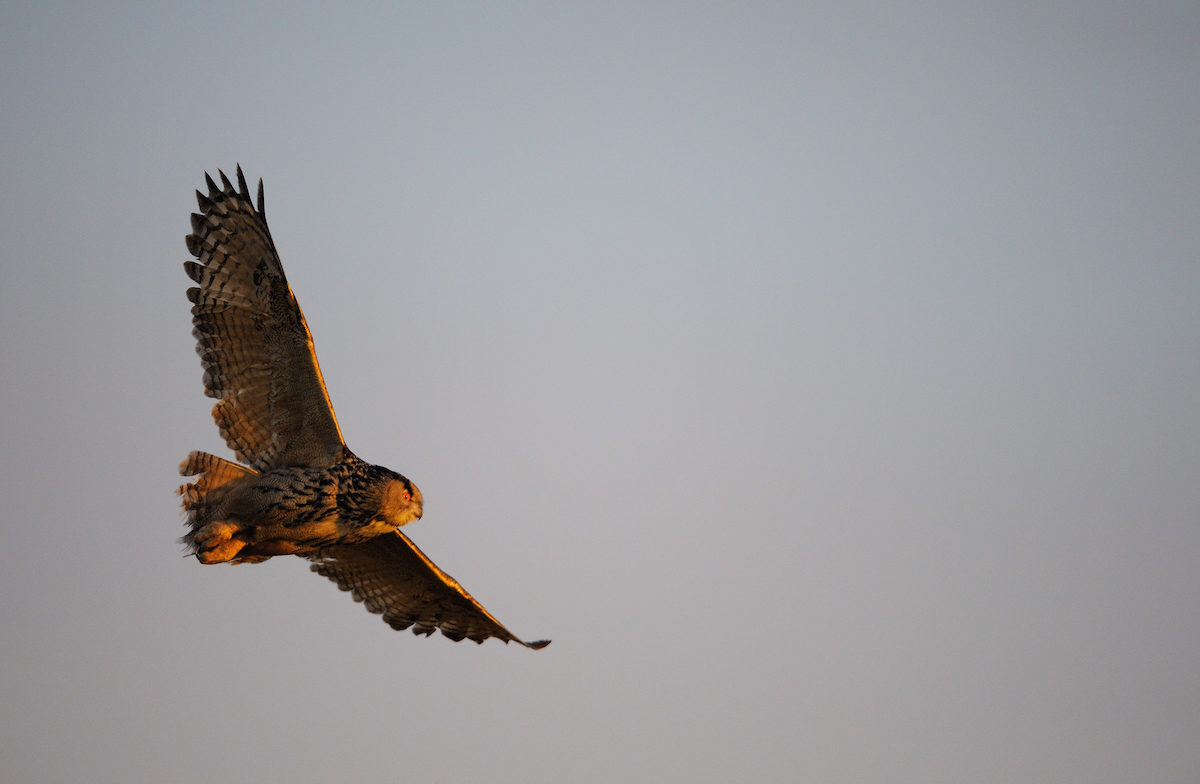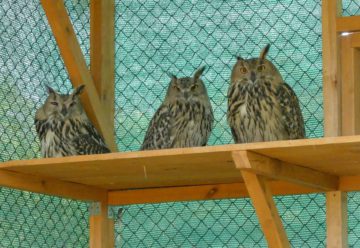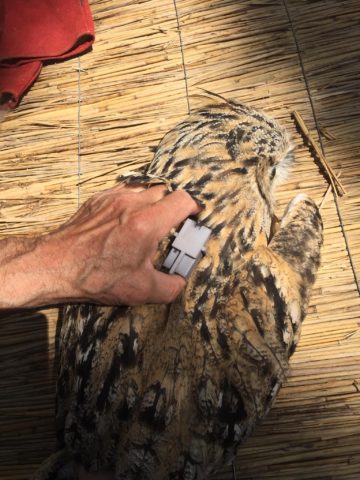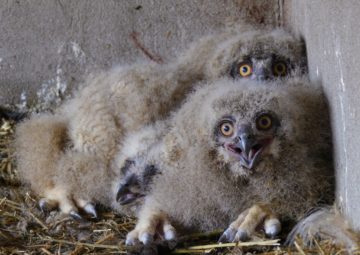An ongoing eagle owl reintroduction programme has just seen three juvenile birds released in the Ukrainian part of the Danube Delta. As part of scaled-up rewilding efforts in the delta, the programme should boost trophic complexity and reestablish a viable local population of the species.

Three go free

The Ukrainian section of the Danube Delta rewilding area has just become a little wilder, with three juvenile eagle owls just released on July 11th. This is the second release of a reintroduction programme in the delta that began in July last year. The programme will see a total of 20 birds released over the next three years, with the aim of re-establishing a viable Danube Delta eagle owl population.
The reintroduction programme follows a positive feasibility study conducted using IUCN guidelines. Releases, which are overseen by the Rewilding Ukraine team and partners, are part of scaled-up rewilding efforts in the area, which began at the start of 2019 with funding provided by the Endangered Landscapes Programme (ELP). The team will keep track of the movement and behaviour of the birds through GPS transmitters.
“It’s a real thrill to be setting these birds free,” says Rewilding Ukraine Executive Director Mykhailo Nesterenko. “The eagle owl was once widespread in the Danube Delta. This programme will see it retake its natural position as an important part of local food chains.”
Road to recovery
Supporting the restoration of more complete species guilds through wildlife comeback is a core element of Rewilding Europe’s work. Eagle owls were once found right across Ukraine, but the country’s last breeding populations are now restricted to the Polyissa region in the north and Donbass region in the east. Today it is a very infrequent visitor to the Danube Delta.
This decline is mostly attributable to a deliberate eradication campaign (which ended in 1969), disturbance of female birds at early stages of incubation, and collisions with power lines. While the eagle owl is now making a natural comeback in many parts of Europe, hunting pressure in Romania, Ukraine and Moldova means the likelihood of an unaided recovery in the Danube Delta is uncertain. As the eagle owl is a resident and non-migratory species, the newly released birds are expected to stay within the safe confines of the Danube Delta area, where hunting is prohibited.

Keeping track
Fitting the two juveniles with GPS transmitters will allow the Rewilding Ukraine team to monitor the birds as they settle into their new home, providing valuable insight into dispersal and preferred habitats for foraging and roosting.
Results from monitoring, together with prey composition (analysed from owl droppings), will allow further refinement of the reintroduction programme going forwards.
Reintroduction process

The newly released juvenile owls were hatched in Odessa Zoo around five months ago and then transferred to a large aviary in the core zone of the Ukrainian section of the Danube Biosphere Reserve, where they were housed for ten days. This allowed the owls to become acclimatised to their surroundings prior to their rewilding.
Supplying all the released owls, Odessa Zoo is set to play a pivotal role in the reintroduction programme.
“We have significant experience of breeding and raising eagle owls, and have already supported the reintroduction of this rare yet special bird in the delta region of the Dniester River in Ukraine,” says zoo director Igor Belyakov.
Reprising role
Reaching a height of 75 cm and with a wingspan of up to 180 cm, the eagle owl is one of the world’s most impressive owls, with a diet consisting mostly of rats and other small mammals, as well as birds.
A reintroduced population of eagle owls could once again play a beneficial role in the Danube Delta ecosystem.

“The coastal area of the delta is home to large colonies of rats,” explains Maxim Yakovlev, an ornithologist at the Danube Biosphere Reserve. “These destroy the eggs of many birds that breed here. Going forwards, we hope that a stable population of eagle owls will help to control rat numbers.”
It is not only breeding birds that may be glad to see eagle owls regularly patrolling the landscapes of the Danube Delta once again.
“Delta residents and visitors will surely be glad to encounter such a magnificent bird,” says Yakovlev. “With its huge yellow eyes, prominent ‘ear tufts’ and booming ‘ooo-hu‘ call, the eagle owl features in many Ukrainian fairy tales.”
